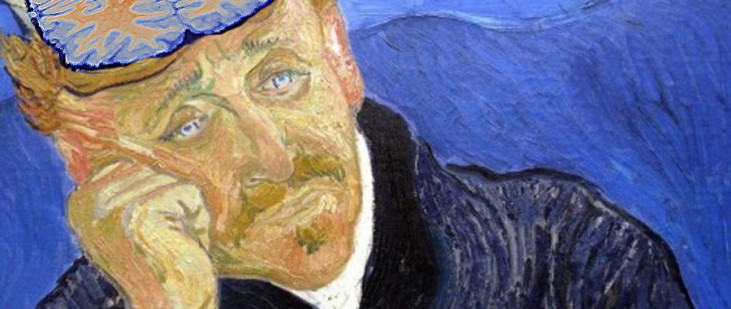 On January 17, 2013, CLBB and the Boston Society for Neurology and Psychiatry hosted an evening event at Brigham and Women’s Hospital to explore and discuss the neuroscience of empathy — the remarkable capacity of humans to relate to others: what we are learning about how and when this capacity fails, and whether these failures — which can have consequences ranging from therapeutic breaches to unthinkable crimes that defy our understanding — can be rehabilitated. Speakers included Massachusetts General Hospital faculty Carl Marci, Director of Social Neuroscience for the Psychotherapy Research Program; Alice Flaherty, Associate Professor of Neurology and Psychiatry; and Helen Riess, Director of the Empathy and Relational Science Program in the Department of Psychiatry; as well as CLBB Director Judy Edersheim.
On January 17, 2013, CLBB and the Boston Society for Neurology and Psychiatry hosted an evening event at Brigham and Women’s Hospital to explore and discuss the neuroscience of empathy — the remarkable capacity of humans to relate to others: what we are learning about how and when this capacity fails, and whether these failures — which can have consequences ranging from therapeutic breaches to unthinkable crimes that defy our understanding — can be rehabilitated. Speakers included Massachusetts General Hospital faculty Carl Marci, Director of Social Neuroscience for the Psychotherapy Research Program; Alice Flaherty, Associate Professor of Neurology and Psychiatry; and Helen Riess, Director of the Empathy and Relational Science Program in the Department of Psychiatry; as well as CLBB Director Judy Edersheim.
Watch the individual presentations and panel discussion below, or visit our “Empathy” channel at Vimeo.com.
Dr. Riess began with a broad overview of empathy as a construct, in health care and in society, distinguishing it from sympathy and antipathy, and outlining its four components: cognitive, affective, behavioral, and moral. She touched on how important nonverbal behavior is in perceiving what other people are feeling and what we’re experiencing ourselves. She concluded with surprising evidence from her own work in a group of doctors indicating that empathy can and perhaps should be taught.
Dr. Marci followed with a discussion of the neurophysiology underlying emotion and empathic connection, and how by looking at laughter in therapy in one set of studies, and measuring sweat gland responses from patients and therapists in another study, he can demonstrate moments of connection and disconnection between patients and their doctors. what he calls “physiological concordance” and “discordance” — that has the potential to be used to improve the effectiveness of therapy. He ended with a discussion of the power of emotion and empathy to bring out the better parts of ourselves, and showed compelling data from “digital natives” that our digital devices may are making this a lot harder.
Dr. Edersheim discussed empathy as it relates to crime, including the robust connection between psychopathy and violent crime, and the prediction of violent crime and recidivism. She was also clear to point out that the best predictor of increase in homicide rates is not mental health-related by rather social dislocation, income inequality, and the absence of social capital. Most crimes are not committed by the kind of high-profile mass shooters we see, so to conceive of crime as only a product of lack of empathy or of mental illness is a mistake.
Dr. Flaherty provided “A Neurologist’s View of Empathy”, an intriguing look at some of the potential downsides to empathy in medical and social contexts: why some doctors resist (especially the “interventionalists”), how medical training may decrease empathy, and how best to rehab those who may be the hardest to reach. She also discussed empathy’s roots as a neologism originating from the art world, moving through the psychoanalytic tradition in the mid 20th-century, before entering the culture of medicine.
Following the four presentations, Martha Bebinger moderated an interesting conversation between the panelists on how empathy varies between individuals, the neural basis for this capacity, and whether we should steer people with more or less empathic capacity to careers based on this capacity. Dr. Riess noted that while the capacity for empathy varies substantially across individuals, the fact that empathy training can improve even those with lower capacity suggests that we should try, especially since many kids may never have had the opportunity to learn in the first place.
Audience and panelists also discussed the provocative question of whether society in general is becoming more or less empathic, and what we should do about it. We live in an ever-expanding and connected community, where on the one hand we are expected to “care” more about the fates of ever more remote people and even animals (e.g., should lobsters be boiled alive?), while at the same time we become ever more addicted to our digital devices, and may burnout faster as we try to maintain too many superficial relationships. Dr. Flaherty reminded us that not too many hundreds of years ago, humans abandoned their sick and dying, while now the sense that we can all be useful to each other has contributed to a much more considerate society overall and that digital devices do not appear to be interfering with this. However, it was not a night for consensus, nor did it need to be, as audience members and panelists left the room pondering what were sure to be more questions than answers on this fascinating and timely topic.




